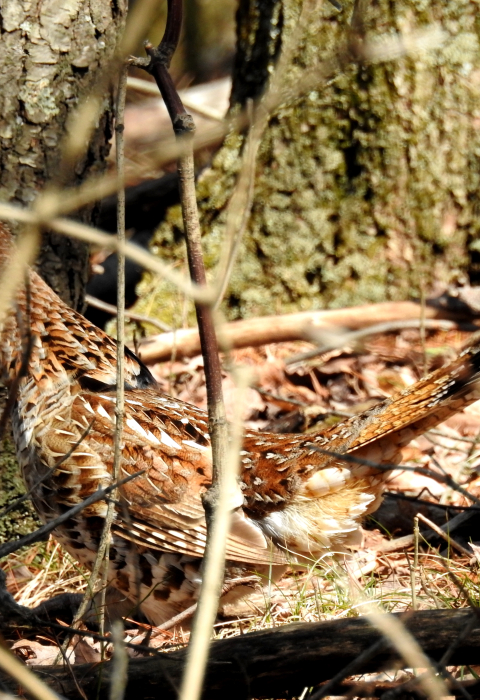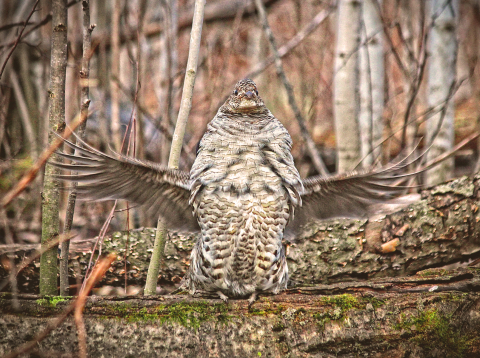A Well-Camouflaged Woods Dweller
The ruffed grouse (Bonasa umbellus) is a chunky, medium-sized bird whose mottled plumage blends it into thick habitat. Grouse feed mainly on plant matter and insects, both of which are abundant in young forest and shrubland.
In the spring, males attract females by “drumming,” beating their wings while sitting on logs and stumps. Hens nest on the ground at the base of a tree or in thick brush.
At Home in Young Forest
Ruffed grouse live in forested uplands. Their ideal habitat is a mix of different-aged forest stands that provide a variety of resources year-round. Their numbers are lower in mature woods and in small patches of forest surrounded by farmland.
Learn more about ruffed grouse range, biology, and behavior at Cornell University's All About Birds website.
Falling Populations
In general, grouse populations in the Northeast have fallen since the 1980s because of a gradual dwindling of their preferred young forest and shrubland habitat. State wildlife agencies in the region consider the ruffed grouse a "Species of Greatest Conservation Need" and are creating and managing habitat to help increase grouse numbers.
A significant threat to ruffed grouse is illness caused by mosquito-borne West Nile virus. Research indicates that providing abundant high-quality habitat is the most effective way to help local grouse populations rebound from the effects of the virus.
Making and Renewing Early Successional Habitat
Landowners and resource managers often use clearcut timber harvests to create young forest that provides food and cover for grouse. A stand of regrowing forest offers ideal grouse habitat for up to 20 years or a bit longer.
Two publications by the Pennsylvania Game Commission apply to much of the ruffed grouse's range in the Northeast: Habitat Management for Pennsylvania Ruffed Grouse and Grouse Management Best Practices.
The Ruffed Grouse Society/American Woodcock Society, a partner in the Young Forest Initiative, works to create healthy forests for these two birds, which often share the same habitats.
A Ruffed Grouse Conservation Plan outlines efforts to reverse the species' population decline.


